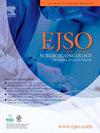接受新辅助治疗的胃癌患者精确风险分层的轮廓模型:一项多中心回顾性研究。
IF 2.9
2区 医学
Q2 ONCOLOGY
引用次数: 0
摘要
背景:淋巴结转移(LNM)是胃癌(GC)预后的关键决定因素。准确评估淋巴结受累可提高预后准确性,并为术后策略提供信息。方法:本回顾性研究包括2009年至2019年在两个中心接受新辅助化疗后治疗性手术的649例胃癌患者。使用匹配标准从SEER数据库中选择另外292例患者。收集的变量包括淋巴结清扫数(rLNs)、阳性淋巴结数(pLNs)、治疗后病理T分期(ypT)和肿瘤消退等级。采用高斯过程增强的Cox回归方法构建了一种新的类轮廓型ypTN (Con-ypTN)模型来预测总体预后。通过受试者工作特征曲线分析、德龙检验、校正图和决策曲线分析来评价模型的性能。结果:conp - yptn模型具有较强的预后判别能力。训练队列的AUC值为0.853 (95% CI: 0.807-0.900)。校准图和Delong测试结果显示,所有数据集的预测结果与实际结果吻合良好。值得注意的是,Con-ypTN模型明显优于所有比较分期系统(P结论:Con-ypTN模型为接受新辅助化疗的胃癌患者的预后分层提供了一个强大的临床相关工具。该模型能够精确识别高危个体,为术后临床决策提供更好的指导。本文章由计算机程序翻译,如有差异,请以英文原文为准。
Contour-like model for precision risk stratification in gastric cancer patients underwent neoadjuvant therapy: A multicenter retrospective study
Background
Lymph node metastasis (LNM) is a critical determinant of prognosis in gastric cancer (GC). Accurate evaluation of lymph node involvement enhances prognostic accuracy and informs postoperative strategies.
Methods
This retrospective study included 649 GC patients who received neoadjuvant chemotherapy followed by curative surgery at two centers between 2009 and 2019. An additional cohort of 292 patients was selected from the SEER database using matching criteria. Collected variables included the number of retrieved lymph nodes (rLNs), positive lymph nodes (pLNs), pathological T stage after treatment (ypT), and Tumor Regression Grade. A novel contour-like ypTN (Con-ypTN) model was constructed using a Gaussian process-augmented Cox regression approach to predict the overall prognosis. Model performance was evaluated through receiver operating characteristic curve analysis, the Delong test, calibration plots, and decision curve analysis.
Results
The Con-ypTN model demonstrated strong prognostic discrimination. AUC values were 0.853 (95 % CI: 0.807–0.900) in the training cohort. Calibration plots and Delong test results showed good agreement between predicted and actual outcomes across all datasets. Notably, the Con-ypTN model significantly outperformed all comparator staging systems (P < 0.05). Patients classified as high risk by the Con-ypTN model had significantly worse survival outcomes than those in the low-risk group (P < 0.05).
Conclusion
The Con-ypTN model provides a robust and clinically relevant tool for prognostic stratification of GC patients treated with neoadjuvant chemotherapy. The model enables precise identification of high-risk individuals, offering improved guidance for postoperative clinical decision-making.
求助全文
通过发布文献求助,成功后即可免费获取论文全文。
去求助
来源期刊

Ejso
医学-外科
CiteScore
6.40
自引率
2.60%
发文量
1148
审稿时长
41 days
期刊介绍:
JSO - European Journal of Surgical Oncology ("the Journal of Cancer Surgery") is the Official Journal of the European Society of Surgical Oncology and BASO ~ the Association for Cancer Surgery.
The EJSO aims to advance surgical oncology research and practice through the publication of original research articles, review articles, editorials, debates and correspondence.
 求助内容:
求助内容: 应助结果提醒方式:
应助结果提醒方式:


